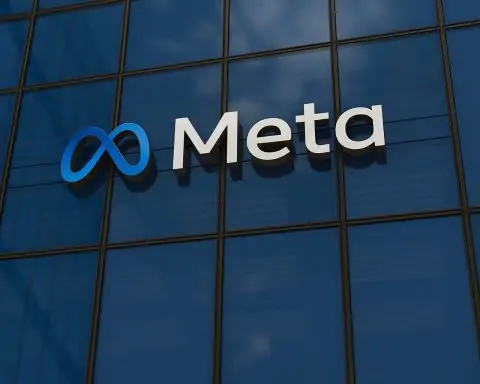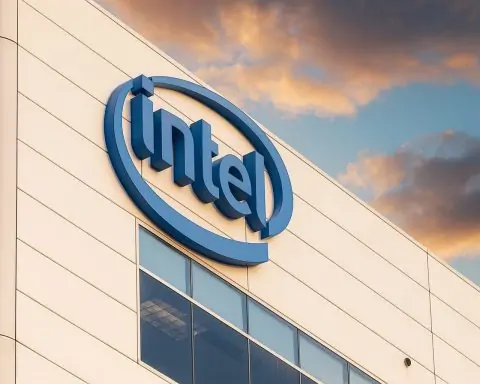- By mid-2023, fixed fiber passed over 92% of Portuguese homes, with end-2023 FTTH/B connections totaling 3.24 million households versus about 1.3 million on cable.
- By June 2023, 5G coverage reached about 98.1% of households (low-band), and rural 5G coverage jumped to 87.5% by mid-2023 from 20% in 2022.
- As of June 2023, 97.6% of households had at least one fixed broadband connection, and 94.2% had access to Very High Capacity Networks (gigabit fiber or cable).
- The fixed broadband market is dominated by MEO (around 40%), NOS (about 35%), Vodafone (roughly 20%), and Digi/Nowo, collectively controlling about 96–97% of subscriptions.
- In 2020, MEO launched Portugal’s first 10 Gbps symmetric fiber service, initially in major district capitals.
- The Azores and Madeira islands are well connected, with Madeira reporting 100% rural coverage and the Azores achieving near-complete rural coverage.
- Portugal maintains extensive public internet access through Espaços de Internet and municipal free Wi‑Fi hotspots across cities and transport hubs.
- Since 2022, the Social Internet Tariff provides 12 Mbps down/2 Mbps up for €6.15/month with a 15 GB monthly cap for eligible low-income households.
- Starlink began in August 2021 and now offers nationwide coverage with typical speeds above 100 Mbps and prices around €65/month as of 2025, with hardware near €300.
- The Gigabit for All plan targets 2030, backed by subsidies for white areas and regulatory measures to boost competition and speed, with 5G expansion and future Wi‑Fi 6/6E and 6G developments on the horizon.
Portugal has undergone a rapid digital transformation over the past two decades, achieving near-universal internet availability and embracing cutting-edge technologies. Today, Portuguese residents enjoy a range of internet access options – from ultra-fast fiber connections in Lisbon and Porto to mobile broadband reaching remote villages in the Azores. Government initiatives and private investments have expanded coverage nationwide, although gaps remain in some rural areas. This comprehensive guide examines the types of internet access available in Portugal, the major service providers and their market shares, regional coverage disparities, typical speeds and pricing, policy initiatives for digital inclusion, the historical evolution of infrastructure, comparisons with other European countries, the rise of satellite internet (Starlink and others), and the future outlook including 5G and rural connectivity projects. Key statistics, maps, and data points are included to illustrate Portugal’s digital revolution.
Types of Internet Access in Portugal
Portugal offers multiple forms of internet connectivity to consumers and businesses, ensuring that most needs are met through one or more access technologies:
- Fixed Broadband (DSL, Cable, and Fiber): Fixed broadband is widely deployed across Portugal. Legacy ADSL (telephone-line based) broadband has been available since 2000, with virtually the entire territory covered by DSL in the 2000s [1]. Cable broadband (coaxial networks) emerged via cable TV operators and today covers about 58% of households (with modern DOCSIS 3.1 upgrades) [2]. Most notably, fiber-optic (FTTH) has become the dominant fixed access technology, with over 92% of homes passed by fiber as of mid-2023 [3]. Fiber connections offer speeds from 100 Mbps up to 1 Gbps or more, providing the highest performance. At the end of 2023, 3.24 million Portuguese households were connected via FTTH/B, far outnumbering the 1.3 million still using cable [4]. Nearly all households now have access to at least one high-speed fixed network (fiber or cable) [5].
- Mobile Internet (3G/4G/5G): Mobile networks blanket the country and play a crucial role in internet access. Portugal boasts one of the highest mobile phone penetration rates in the world, with mobile subscriptions exceeding the population [6]. The same cellular networks provide extensive wireless internet coverage across the entire territory [7]. 3G and 4G (LTE) services have long been available nationwide; and starting in late 2021, Portuguese operators launched 5G services. Although Portugal was among the last in Europe to introduce 5G, the rollout since then has been aggressive – by June 2023, 5G signal reached about 98.1% of households (using low-band spectrum) [8]. Even in rural areas, 5G coverage jumped from only 20% in mid-2022 to 87.5% of rural households by mid-2023 [9]. This means most people can access the internet via smartphones or mobile broadband routers, with 4G/5G serving as a backup or alternative in areas without fiber. Mobile broadband usage among individuals stood at 82% in 2021 (just below the EU average of 87%) [10], and is likely even higher today as 5G networks expand.
- Public Wi-Fi and Community Access: Portugal has a culture of readily available Wi-Fi in urban centers. Many cafés, restaurants, hotels, shopping malls, and even post offices offer paid or free Wi-Fi for customers [11]. In major cities, municipal initiatives have installed free Wi-Fi hotspots in public squares and transport hubs. Additionally, the government has set up “Espaços de Internet” (Internet Spaces) across the country where residents can access computers and the internet for free [12]. These are often in community centers or libraries, aimed at promoting digital inclusion for those who may not have service at home. Such public access points ensure that virtually everyone has some form of internet access, even if they lack a personal subscription.
- Fixed Wireless and Others: In a few cases, fixed wireless solutions are used to reach remote locations. Some telecom providers offer 4G/5G-based home internet (router devices that deliver Wi-Fi to the home via the mobile network) as an alternative where fiber is unavailable [13]. There are also niche wireless ISPs and point-to-point radio links in rural or mountainous areas, though their footprint is limited. For the roughly 2–3% of households in very isolated spots that have no fiber, DSL, or reliable mobile coverage [14] [15], satellite internet services are an option – this is discussed in detail in a later section.
Overall, Portugal’s mix of fiber-optic broadband, upgraded cable networks, nearly ubiquitous mobile internet, and public Wi-Fi has created a robust ecosystem of connectivity. The preferred choice is fixed ultra-broadband for its speed and unlimited data – as evidenced by 94% of households having a fixed broadband subscription by 2023 [16] – but alternative access types ensure that even hard-to-reach communities can get online one way or another.
Major Internet Service Providers and Market Share
The Portuguese ISP market is dominated by a few large telecommunications operators that provide integrated services (fixed broadband, mobile, TV, etc.). According to the national regulator ANACOM and industry reports, over 95% of broadband subscriptions are served by four main companies [17]:
- MEO (Altice Portugal): The largest ISP, formerly Portugal Telecom. MEO holds roughly 40% of the fixed broadband market by subscribers, making it the leading provider [18]. It operates extensive fiber and DSL networks (reaching ~4.8 million households with fiber [19]) and also runs a mobile network. MEO offers popular triple-play bundles (internet, TV, phone) and was the first to launch 10 Gbps fiber services in 2020 (initially in major cities) [20]. Being part of Altice Group, MEO has invested heavily in fiber rollout and network upgrades.
- NOS: The second-largest player, with around 35% market share of fixed broadband [21]. NOS formed from a merger of Zon (a cable TV operator) and Optimus (a mobile operator), and thus operates both cable (HFC) networks and fiber. NOS has upgraded all its cable infrastructure to DOCSIS 3.1, enabling gigabit speeds [22] [23]. It also provides mobile services (holding a 5G license) and offers bundles similar to MEO. NOS is particularly strong in urban and suburban areas and competes closely with MEO in the residential segment.
- Vodafone Portugal: A major mobile operator that also offers fixed broadband (both fiber and some DSL). Vodafone has about 20% of the broadband market [24]. It has expanded fiber coverage through both its own deployment and a network-sharing joint venture with MEO and NOS (Vodafone and Altice agreed in 2022 to jointly invest in fiber-to-the-home in smaller towns, accelerating rollout) [25]. Vodafone is known for high-quality mobile service and has been growing its fixed-line subscriber base by leveraging its brand and competitive pricing.
- Nowo/Digi:Nowo was a smaller cable and fiber provider (around 2–3% market share) focused on specific regions. In 2024, Digi Portugal – a newcomer backed by Romania’s Digi Communications – acquired Nowo to enter the market [26] [27]. Digi had previously won 5G spectrum in 2021 and is building out its own mobile network [28]. With Nowo’s ~130,000 fixed-line customers and 270,000 mobile customers [29], Digi is positioning itself as a fourth convergent operator. Digi is known for aggressive pricing in other countries and may drive prices down in Portugal’s future. For now, its share is small, but growing.
These four (MEO, NOS, Vodafone, Digi/Nowo) collectively control about 96–97% of the fixed broadband market [30], while a few tiny regional ISPs and niche providers account for the remainder. The market is thus highly consolidated. Competition is strong between the “big three” (MEO, NOS, Vodafone) in terms of network quality and bundled service offerings, but less so on standalone price – an issue reflected in Portugal’s relatively high broadband prices (see the pricing section below).
Notably, MEO (Altice) and NOS also dominate the pay-TV segment, each with ~36–42% share, while Vodafone has ~19% and Nowo ~3% [31]. Since most consumers take bundled packages, the leadership in TV parallels that in internet subscriptions. The entry of Digi is the major shake-up on the horizon: ANACOM has explicitly encouraged new entrants to enhance competition [32]. Digi’s acquisition of Nowo in 2024 came after regulators blocked a merger of Nowo with Vodafone, aiming to preserve a fourth operator [33]. Going forward, watchers expect Digi to introduce lower-cost plans, which could gradually shift these market share figures and potentially benefit consumers.
Coverage by Region and Urban vs. Rural Disparities
Thanks to extensive infrastructure deployment, Portugal’s overall internet coverage is among the best in Europe, but there are still regional differences and an urban–rural gap in the type and quality of access. The coastal and metropolitan areas enjoy nearly ubiquitous high-speed networks, whereas some interior rural regions lag behind (though even these have basic service through DSL or wireless). Key aspects of the coverage landscape include:
Figure: Rural Gigabit Coverage by Region (2023). A map of Portugal showing rural Very High Capacity Network (VHCN) coverage (FTTH or DOCSIS 3.1 cable) by region in mid-2023. Many regions – including Lisbon, Porto, Aveiro, Coimbra, as well as Madeira and the Azores – have achieved nearly 100% high-speed coverage even in rural areas. For example, the Madeira and Oeste regions both report 100% of rural households covered by gigabit-capable networks, and the Porto area exceeds 95% [34]. In contrast, a few interior regions still fall far behind: Tâmega e Sousa in the north has under 35% rural VHCN coverage, and Terras de Trás-os-Montes and Baixo Alentejo each had only around 60–65% [35] [36]. These disparities highlight that while cities and many towns now enjoy fiber, truly remote villages may not yet be reached by the fastest networks. Overall, however, coverage is high – by June 2023, fixed broadband of any kind was available to 97.6% of all households nationwide, and 88.4% of rural households had at least one fixed broadband option (e.g. DSL or wireless if not fiber) [37].
National vs. Rural Coverage: In aggregate, Portugal’s broadband coverage numbers are impressive. Next-generation access (NGA, defined as 30 Mbps or higher) is nearly universal at ~98% of households [38]. The country made a strategic leapfrogging decision to skip incremental upgrades like VDSL in favor of full fiber deployment – as a result, 94.2% of homes have access to “Very High Capacity” networks (gigabit fiber or cable), which is about 15 percentage points above the EU average [39]. Rural coverage is where the gap shows: only 71.4% of rural households had VHCN availability in 2023 [40]. While this rural gigabit coverage is actually well ahead of the EU average (Portugal has been a leader in wiring up countryside towns), it still means roughly 30% of rural homes lack fiber or cable and must rely on older tech. In those rural locales, DSL remains the most prevalent technology (available to ~70% of rural homes) with fiber catching up (68.7% rural fiber coverage as of 2023) [41]. Cable networks cover about 35% of rural households (mainly in smaller cities or dense villages) [42]. Thus, a rural household in Portugal today usually has at least a DSL line, and in 2 out of 3 cases can get fiber, but there is a minority with sub-30 Mbps options unless they use satellite (e.g. some isolated hamlets in mountainous or inland Alentejo areas).
Regional Initiatives: The government and EU have targeted the remaining “white areas” (no high-speed network) for intervention. Mapping by ANACOM’s GeoPortal identifies the specific zones and even buildings without broadband coverage [43]. Projects are underway to extend fiber to these last pockets – for instance, public tenders are being launched to incentivize operators to build in low-density regions, with subsidies to make it viable [44]. The Autonomous Regions (Azores and Madeira) deserve mention: despite their distance, they are well connected via undersea fiber cables and local FTTH deployments. Madeira’s rural coverage is 100% and the Azores also achieved near-complete coverage [45]. This is a notable success in bridging the insular digital divide, ensuring even mid-Atlantic island communities have broadband on par with the mainland.
In summary, Portugal’s urban centers have state-of-the-art networks (multiple gigabit providers in Lisbon, Porto, etc.), and most smaller towns are now reached as well. The country has no broad “north-south” or “coastal-interior” digital divide – rather, the challenge has narrowed to scattered rural pockets. With ongoing initiatives, the expectation is that by the late 2020s virtually all households, regardless of location, will have access to a high-speed connection, whether through fiber, cable, 5G, or satellite. The strong coverage figures to date reflect the substantial investments made in Portugal’s broadband infrastructure.
Internet Speeds and Pricing in Portugal
Typical Internet Speeds: Portugal’s high coverage of fiber and DOCSIS 3.1 cable translates into fast average speeds for users. As of early 2025, the median fixed broadband download speed in Portugal was measured around 205 Mbps (megabits per second) [46], placing the country among the top tiers globally for internet speed. This is a huge jump from a decade ago and is largely due to the prevalence of FTTH. In fact, by the end of 2022, 89% of all fixed broadband subscriptions were “ultra-fast” (100 Mbps or above) [47], indicating that the vast majority of customers have high-bandwidth plans. Common consumer fiber packages today range from 100 Mbps on the low end up to 500 Mbps or 1 Gbps for standard offerings. All major ISPs (MEO, NOS, Vodafone) offer 1 Gbps plans in covered areas, and often bundle them with television and phone service. For power users, MEO (Altice) introduced a 10 Gbps symmetric fiber service – reportedly the first in Portugal – available in all district capitals starting in 2020, though it carries a premium price (~€100 per month) [48]. Such multi-gigabit plans remain niche, but they showcase that the network can support extreme speeds. On the mobile side, 4G LTE typically delivers between 30–60 Mbps in practice, and early 5G speeds can exceed 150–200 Mbps in areas with mid-band coverage. In Opensignal’s 2023 tests, NOS’s 5G network even averaged ~200 Mbps downloads, a bit ahead of MEO and Vodafone [49]. For most consumers, the upshot is that streaming 4K video, online gaming, and video conferencing are readily supported on Portuguese broadband connections. The country’s digital infrastructure can be described as future-ready, with average speeds continuing to rise each year.
Pricing Models and Bundles: Internet service in Portugal is often sold as part of a bundle with TV, fixed telephone, and sometimes mobile service. Multi-play bundles are extremely popular – over 90% of fixed broadband customers opt for some form of bundle (e.g. triple-play) rather than standalone internet [50]. A typical bundle from MEO, NOS or Vodafone might include 200–500 Mbps internet, 150+ TV channels, unlimited fixed phone calls, and perhaps a mobile SIM, for around €40–€60 per month depending on promotions. Standalone broadband (without TV or phone) is less common and, somewhat paradoxically, not much cheaper; in fact, Portugal’s standalone broadband prices have historically been on the high side. An ANACOM analysis in 2020 found that Portuguese fixed broadband-only plans cost about 40–50% above the EU average, making Portugal the 5th most expensive country in the EU for single-play broadband at that time [51]. For example, a 100 Mbps standalone connection might have been ~€30–€35 in Portugal vs ~€20 in some other EU markets. Operators have largely focused on selling bundles, which can obscure the specific price of the internet component.
To address affordability for low-income users, since 2022 the government mandated a “Social Internet Tariff” – a basic broadband package for eligible low-income households. This social tariff provides a 12 Mbps download / 2 Mbps upload connection (suitable for essential tasks) at a regulated price of €6.15 per month [52]. It comes with a monthly traffic cap (15 GB) and minimal installation fees [53]. All major ISPs must offer this plan to those who qualify (e.g. people on certain social benefits) [54]. While 12 Mbps is relatively slow by today’s standards, this initiative ensures that cost is not a barrier to basic connectivity for vulnerable groups – aligning with digital inclusion goals.
Comparative Affordability: For the general population, Portuguese broadband prices have moderated slightly in recent years but can still feel high. Many expats and consumers note that a double or triple-play bundle in Portugal often costs €50+ monthly, which is comparable to Western Europe, despite Portugal’s lower average income. On the other hand, mobile data is reasonably priced – competition among mobile operators has led to generous data plans for under €20. In a recent example, the new entrant Digi shook up mobile pricing by offering 50 GB for just €4/month in 2023 [55] (though that was a special case). For home internet, promotions and loyalty discounts are common, so savvy customers can negotiate better deals or get free upgrades (like a speed bump or premium channels included).
In summary, Portugal offers excellent speeds but at a somewhat premium cost. The value proposition is strongest when you bundle services or if you live in an area with overlapping provider coverage (e.g. both NOS and MEO fiber available, giving you leverage to choose or haggle). Average consumers pay a bit more for internet than elsewhere in the EU, but they do enjoy reliable, fast connections. As competition evolves – especially with Digi’s entry – there’s hope for improved affordability. Until then, the government’s social tariff and the widespread availability of public Wi-Fi help ensure even those who can’t afford the standard rates have options to stay connected.
Government Policies, Investments, and Digital Inclusion Initiatives
The Portuguese government has been proactive in fostering internet expansion and ensuring the benefits of connectivity reach all citizens. A number of policies, strategies, and programs underpin Portugal’s digital development:
- National Digital Strategy (Agenda Portugal Digital): This is an overarching action plan for Portugal’s digital transition. The “Agenda Portugal Digital” (Action Plan for Digital Transition) was updated in 2021 [56]. It outlines broad pillars such as digital inclusion, digital transformation of businesses, and digitalization of public services [57]. While it doesn’t set specific broadband coverage targets, it identifies connectivity and infrastructure as key “catalysts” enabling the plan [58]. In essence, this agenda ensures that building robust internet infrastructure is a national priority and ties into socioeconomic development goals.
- Connectivity Targets – Gigabit 2030: In alignment with EU goals, Portugal approved a National Strategy for Connectivity in Very High Capacity Networks 2023–2030, which explicitly aims to cover all households with a gigabit network by 2030 [59]. This strategy acknowledges that private investment will drive network expansion in commercially viable areas, while public funding will step in for “market failure” areas (the so-called “white areas” with no broadband) [60]. The government plans to use public tenders to subsidize rollout in those white areas in a targeted, proportional way – ensuring that rural and low-density regions aren’t left behind [61]. ANACOM will monitor progress via connectivity mapping and key indicators. The Portugal 2030 program (Portugal’s EU-funded investment plan) also allocates funds to broadband, including extending fiber and 5G to industrial, commercial, and agricultural zones by 2030 [62].
- Rural Broadband and EU Funds: Going back a decade, Portugal has leveraged European funding to expand rural broadband. Under the EU’s structural funds and specific initiatives like the Recovery and Resilience Plan (RRP) post-COVID, Portugal secured money for digital infrastructure. For instance, earlier broadband initiatives (2009–2010) used public-private partnerships to connect 1.5 million homes with fiber [63], many in less-covered areas, and achieved targets like 50% household broadband penetration by 2010 [64]. Today’s efforts are even more ambitious with the Gigabit 2030 aim. The government and EU have also promoted free Wi-Fi in communities (through programs like WiFi4EU, which provided grants for municipalities to install hotspots). Dozens of Portuguese towns benefited from that, installing free Wi-Fi in public squares and libraries.
- Regulatory Measures: Portugal’s telecom regulator ANACOM plays an important role in ensuring competition and transparency. It has pressured incumbents to open networks and has mapped infrastructure in a centralized system to avoid duplicating builds [65]. ANACOM has also taken steps like eliminating zero-rated mobile data packages (mandating net neutrality compliance in 2023) [66], which influences how consumers use mobile internet. Additionally, the Competition Authority (AdC) has intervened in mergers (e.g., blocking Vodafone’s attempt to buy Nowo) to keep the market open for new entrants [67]. These regulatory actions indirectly support broader access and better prices.
- Digital Inclusion Programs: Beyond infrastructure, there are initiatives to ensure all citizens can use the internet. The “Iniciativa Nacional Competências Digitais e.2030” (National Initiative for Digital Skills), also known as Portugal INCoDe.2030, includes programs for digital literacy training, especially targeting older populations and underserved communities. Furthermore, as mentioned, the Social Internet Tariff provides an affordable option for low-income families [68]. Portugal also established many ICT training centers and public internet spaces (the “Espaços de Internet”) to encourage those who lack equipment or skills to come and get online with assistance [69]. These spaces often offer free computer use, basic training, and access to e-government services, helping to close the usage gap.
- 5G and Innovation: The government sees new networks like 5G as critical for future connectivity. ANACOM created a 5G Observatory/Portal [70] to inform the public about 5G rollout and ensure transparency. The 5G spectrum auction in 2021 was designed with provisions to attract new players and require coverage obligations. Indeed, license terms mandated that operators extend 5G coverage to lesser-served regions by certain deadlines (for example, covering all parishes with low population density by 2025). These policies mean that 5G isn’t just confined to big cities – it’s being pushed into rural areas as a complementary solution to achieve universal high-speed internet. The government is also supporting experimental tech like satellite broadband and public Wi-Fi expansions for remote education and telemedicine (some of these came to the forefront during the pandemic when remote access was essential).
Overall, Portugal’s policy framework for internet access is a mix of ambitious long-term goals (Gigabit for All by 2030), targeted short-term measures (subsidies for rural networks, social tariffs), and market regulation to foster competition. The consistent theme is digital inclusion: ensuring that no region or demographic group is left offline. By coupling infrastructure investment with digital skills programs and affordability measures, Portugal is not only building networks but also creating the conditions for its people to fully participate in the digital economy and society.
Historical Evolution and Recent Trends in Internet Infrastructure
Portugal’s journey to today’s digital landscape is marked by rapid growth and technological leapfrogging. Key phases in the historical evolution include:
- 1990s – Market Liberalization: Up until the early 1990s, the telecom sector (including internet services) was tightly controlled by the state monopoly (Portugal Telecom). Reforms began in the 1990s with the creation of the Portuguese Communications Institute and a phased liberalization [71]. New competitors were allowed in, breaking PT’s monopoly. By the late ’90s, dial-up internet access was available to the public, and the first cable TV companies (e.g. TV Cabo) started offering cable internet in limited areas. The groundwork was laid for a competitive market, which proved crucial for later broadband development [72].
- 2000s – Spread of Broadband (ADSL and Cable): The early 2000s saw the rollout of ADSL broadband over telephone lines. PT (under the Telepac and SAPO brands) launched ADSL around 2000, and uptake grew significantly by 2002 as competition increased and prices fell [73]. By mid-2000s, ADSL coverage reached virtually the entire country, even rural parts – Portugal became one of the few European countries with near-universal DSL availability [74]. Internet penetration soared, crossing 50% of households by the end of the decade [75]. In parallel, cable broadband expanded in urban centers through providers like Netcabo (later NOS). By 2009, broadband services of 100 Mbps and above were being tested/launched on these networks [76]. The late 2000s also saw Portugal embracing Wi-Fi – many people got online via wireless hotspots or home Wi-Fi routers as those became common.
- Late 2000s to Early 2010s – Fiber Optic Revolution: Around 2008–2010, Portugal made a strategic push into fiber-optic (FTTH) networking. The government’s Broadband Initiative (2009–2010) set ambitious targets: connect 1.5 million homes to fiber and reach 50% household broadband penetration by 2010 [77]. Both goals were achieved, thanks to incentives and operators’ investments. The major operators (PT, Zon, Sonae/Optimus) partnered to build high-speed networks and avoid duplication [78]. By 2010, commercial fiber plans with 100 Mbps, 200 Mbps, even 1 Gbps were launched in parts of Lisbon and Porto [79] – remarkably forward-looking at that time. Portugal Telecom (MEO) led the fiber rollout, and cable operators upgraded networks too. This period also saw 3G mobile broadband become popular: the introduction of affordable 3G data plans and USB dongles meant many could access internet on the go. By 2013, 4G LTE was introduced, further enhancing mobile speeds.
- Mid-2010s – Consolidation and Ultra-Fast Expansion: The mid-2010s were characterized by consolidation among telecom companies and extensive network upgrades. In 2013, Zon and Optimus merged to form NOS, strengthening a competitor to PT and Vodafone. Altice, a multinational, acquired Portugal Telecom in 2015, rebranding it as MEO. Under Altice, MEO accelerated fiber deployment – by late 2010s, millions of homes had FTTH. By 2018–2019, Portugal had one of the highest fiber coverage rates in Europe, covering roughly 90% of households [80]. The country also heavily adopted “triple-play” bundles during this time, bundling internet/TV/phone, which drove broadband uptake higher. Another trend was the improvement of international connectivity: new submarine cables like EllaLink (2021) landed in Portugal, making Sines a hub linking Europe to Latin America with high-capacity fiber [81]. This bolstered backhaul and data center growth in Portugal, preparing for future traffic demands.
- 2020s – 5G Era and Full Coverage Push: Entering the 2020s, Portugal’s focus shifted to mobile 5G rollout and reaching the last unserved areas. The 5G spectrum auction in 2021 (after some delay) allowed operators to launch 5G by the end of that year [82]. By 2022–2023, as noted, 5G coverage rapidly extended nationwide [83]. On the fixed side, the remaining ADSL lines are being phased out as fiber replaces them. At the end of 2023, as cited earlier, nearly the entirety of households had access to at least one high-speed network and 94% of households actually subscribed to fixed broadband [84]. The number of fiber-connected households (3.24 million) shows how Portugal moved almost entirely to fiber in just a decade [85]. Recent trends also include the advent of satellite broadband options (Starlink in 2021) and the entrance of Digi as a new competitor (in 2022–2024) shaking up the market status quo. Internet usage has grown to encompass virtually all businesses and the vast majority of individuals – by 2023, 97% of companies had internet access [86] and around 84% of individuals were internet users (per Eurostat).
Throughout this evolution, a defining trait of Portugal’s strategy was to embrace next-generation technologies early. From launching 1 Gbps fiber in 2009, to ensuring nationwide fiber coverage by the late 2010s, to rapidly deploying 5G, Portugal often surged ahead of the EU averages in infrastructure (even if in digital adoption it has sometimes been middle-of-pack). The historical investments are now paying off: Portugal in 2025 is a country where digital services are ingrained in daily life, and where the internet is fast becoming as ubiquitous as electricity.
Comparison with Other European Countries
In the European context, Portugal presents a mix of strengths and weaknesses in its internet landscape. Here’s how it compares on key metrics of accessibility, speed, and affordability:
- Coverage and Access: Portugal is among Europe’s leaders in high-speed broadband availability. It boasts 93–94% coverage of Very High Capacity Networks (gigabit-capable), far above the EU average of ~73% [87]. Notably, FTTH coverage (~92%) and adoption in Portugal are among the highest in the EU [88] [89], rivaling fiber champions like Spain and Sweden. Rural coverage, at ~71% VHCN, is also significantly higher than most EU countries (many of which struggle to reach 50% in rural areas) [90]. This means Portugal has largely achieved the EU’s “Connectivity 2025” targets ahead of time in terms of infrastructure. Virtually all Portuguese households have at least 30 Mbps available (97.6% coverage) [91], whereas some EU countries still have notable gaps. Even the archipelagos (Azores/Madeira) are well-connected, which often isn’t the case for remote regions in other nations. In summary, on accessibility Portugal is top-tier in Europe, ensuring broadband networks reach nearly everyone.
- Speed and Performance: Thanks to widespread fiber, Portugal’s internet speeds are among the fastest in Europe. With a median download speed of ~205 Mbps in early 2025 [92], Portugal outranks many Western European peers – for instance, it edges out countries like the Netherlands and Sweden in median speed [93] [94]. In the Speedtest Global Index, Portugal often ranks within the top 20 countries worldwide for fixed broadband speed. European leaders such as Spain and France are slightly ahead (their median speeds were ~245 Mbps and ~287 Mbps, respectively) [95] [96], but Portugal isn’t far behind. Where Portugal lagged until recently was 5G mobile coverage and speed – in 2021 it had 0% 5G coverage while the EU average was 66% [97] – but this gap closed quickly by 2023 with near-ubiquitous 5G launched [98]. In terms of mobile speeds, Portugal’s 4G/5G performance is around the EU average or slightly above, with Opensignal ranking NOS and MEO’s download speeds on par with operators in countries like Germany or Italy [99]. Overall, Portugal offers competitive internet speeds on the European stage, especially on fixed networks, supporting its residents with plenty of bandwidth.
- Affordability and Price Comparison: This is where Portugal has been less favorable. Several analyses show Portugal’s broadband prices are higher than the EU average. As noted, single-play fixed broadband can be ~40% costlier than the European mean [100]. Even bundled offers, while rich in features, take up a higher share of household income compared to countries like France or UK. In 2022, Portugal ranked in the bottom five in the EU for broadband affordability [101]. The Digital Economy and Society Index (DESI) 2022 placed Portugal only 18th out of 27 EU countries on the “Connectivity” dimension [102] – one factor in that ranking is pricing. That said, mobile data prices in Portugal have improved and are closer to European norms due to competitive pressures. Additionally, Portugal’s GDP per capita is below the EU average, which magnifies the perception of high prices. The government’s introduction of a social tariff and encouragement of new entrants are attempts to address this. In summary, Portuguese consumers pay more for internet service relative to many Europeans, which is a point of concern in an otherwise strong digital profile.
- Digital Inclusion and Usage: Portugal has made strides, but compared to some Northern European countries, it still has a bit of a digital skills gap. The share of people with at least basic digital skills and the percentage of e-government users in Portugal are slightly below EU average [103] [104]. This is more about human factors than infrastructure. Countries like Finland or Estonia might outrank Portugal in usage of online services or digital literacy. However, these gaps are closing as younger, digitally native generations become the majority of users and government invests in training for seniors (e.g. programs like “EU SOU Digital” to bring offline adults online [105]).
In conclusion, compared to its European peers, Portugal stands out for its extensive high-speed network coverage and solid speeds, but is held back somewhat by high costs and moderate digital adoption metrics. If one were to use an EU scorecard: Portugal gets top marks in connectivity availability, above-average marks in performance, and below-average marks in affordability. As the country continues to implement pro-competitive measures and as EU-wide trends (like cheaper equipment and new satellite options) put downward pressure on prices, Portugal’s relative position may improve. The commitment to 100% gigabit coverage by 2030 also indicates that Portugal aims to remain among Europe’s elite in broadband infrastructure, ensuring it keeps pace with (or even ahead of) the digital pack.
Availability of Satellite Internet in Portugal (Starlink and Others)
While terrestrial networks cover most of Portugal, satellite internet has emerged as a vital option for certain scenarios – especially for the few remote areas without good ground connectivity, for users who need portable connectivity, or as backup for critical links. Portugal is fully within the service footprint of modern satellite internet constellations.
Starlink, SpaceX’s satellite internet service, has become a common sight in rural Portuguese properties that previously struggled with slow connections. Starlink launched in Portugal in August 2021 [106] after receiving regulatory green light, making Portugal one of the early European adopters of the service. The Starlink network covers the entire country – including the mainland and the Azores and Madeira islands – via a constellation of low-earth-orbit (LEO) satellites. This allows even isolated mid-Atlantic communities in the Azores to access broadband through a small satellite dish on their roof [107]. Starlink delivers high speeds often exceeding 100 Mbps with relatively low latency (~20-50 ms), a huge improvement over legacy satellite systems. In fact, Portuguese users have reported download speeds in the 200–300 Mbps range and uploads of 30–50 Mbps in real-world conditions [108], though speeds can vary. This performance rivals or even surpasses 4G mobile internet, making Starlink a game-changer for areas that have no fiber or reliable mobile coverage.
Beyond Starlink, there are other satellite internet providers serving Portugal:
- Geostationary Satellite Services: Long before Starlink, rural Portuguese households could turn to GEO satellite broadband (e.g. via satellites like KA-SAT operated by Eutelsat/Viasat, or Hispasat). These services (offered through local resellers such as Europasat, VIVASAT, etc.) can provide around 30–50 Mbps download using a dish pointed at the satellite. However, they come with high latency (~600 ms) and data caps. While not widely used, they have been a safety net for the ~2% of locations with no other option. For instance, in mountainous parts of Norte or sparse Alentejo plains, some residents installed satellite dishes to get basic internet at ~20 Mbps when DSL was absent. Today, with Starlink’s arrival, many of those users are switching to LEO for far better quality. Nonetheless, the traditional satellite providers still operate and can serve anyone in Portugal with a clear view of the southern sky, often on a subscription basis (with hardware costs subsidized by some EU rural broadband vouchers in the past).
- Starlink’s Impact and Adoption: Starlink’s pricing in Portugal has evolved. Initially it was around €99/month with a hefty equipment fee (~€700). By mid-2025, Starlink’s monthly fee in Portugal is roughly €65 (and the hardware kit has dropped to around €300 or less due to new “Starlink Mini” options) [109]. This is still expensive compared to a €40 fiber bundle, but Starlink’s audience is different – it targets those who have no fiber/4G or who need the portability. Many farmers, remote workers, and even some yacht owners in Portugal have adopted Starlink. The network is available on the move (Starlink Roam) and even at sea along the Portuguese coast. As of early 2025, Starlink is available in over 110 countries worldwide and Portugal is fully serviced with no notable restrictions [110]. Local tech communities (e.g. the r/Starlink PT forum) have given positive reviews, noting that tasks like Zoom calls and 4K streaming work flawlessly via Starlink in rural Algarve, whereas previously they were impossible on 3G/DSL. The Portuguese government itself has noted Starlink as a potential solution to connect some “white zones” immediately while fiber builds are in progress.
- Emerging LEO Competitors: In the near future, other LEO satellite constellations may expand in Portugal. OneWeb, a UK-based network, is deploying satellites too (though their focus is more on enterprise and government connectivity, potentially partnering with local telcos for backhaul or remote cell site connections in Portugal). Amazon’s Project Kuiper is expected to start launching in 2024–25 and could offer consumer broadband later in the decade, which would include Europe. There is also the EU’s planned IRIS² sovereign satellite constellation, but that is geared toward governmental use and won’t likely manifest as a consumer service. In short, Starlink currently has first-mover advantage in Portugal’s satellite internet market, but within a couple of years there could be multiple choices for high-speed satellite internet.
- Use Cases in Portugal: Satellite internet is particularly useful in specific Portuguese contexts such as: rural tourism (e.g. providing Wi-Fi at a remote agro-tourism farmhouse where guests expect connectivity), maritime connectivity (Portugal’s fishing and commercial ships can use Starlink at sea), and emergency backup (satellite links can maintain communications during disasters or in isolated research stations like on Madeira’s mountains). The Azores, being spread over 9 islands, had some smaller islands relying on satellite links historically before all were connected by subsea fiber; now, Starlink adds redundancy for them too.
To illustrate the benefit: a rural household in Alentejo with no fiber was using a NOS 4G router and barely got 5–10 Mbps. They switched to Starlink and now enjoy over 100 Mbps on average, with peaks above 200 Mbps – “You just cannot compare it with 4G; we used to get 20 Mbps at best, now we exceed 100 Mbps” said one user [111] [112]. This kind of leap in quality is transformative for remote communities, enabling full participation in online education, telehealth, and digital economy activities.
The downside of satellite internet remains the cost and the need for a clear sky view. Not everyone can afford €60+ per month or the upfront hardware fee. And in dense urban areas, satellite isn’t necessary (fiber is better and cheaper). But as a complement to terrestrial networks, satellite services ensure 100% geographic coverage of Portugal – every square kilometer of the country can get internet somehow, even the top of Serra da Estrela or a boat off the coast.
In conclusion, Portugal has warmly embraced satellite internet as part of its connectivity mix, primarily via Starlink’s LEO constellation. With this, the country moves even closer to the ideal of ubiquitous high-speed internet access. Satellite broadband is no longer a slow last-resort; it’s now a fast, viable alternative that is helping close the final gaps in Portugal’s digital map.
Future Outlook: 5G Expansion, Rural Connectivity Projects, and Beyond
Looking ahead, Portugal’s internet access landscape is poised to become even more advanced and inclusive. Several key developments and trends will shape the future:
- 5G Rollout and 5G-Based Services: The next couple of years will see full nationwide 5G coverage materialize. While basic 5G (on low frequencies) already reaches around 98% of households [113], operators will focus on densifying networks and extending mid-band 3.5 GHz 5G to more areas (which was at ~65% coverage in 2023) [114]. By 2025, we can expect the majority of towns and even many villages to have mid-band 5G, enabling ultra-fast wireless broadband (capacities of 1 Gbps in ideal conditions). This will open the door for 5G Fixed Wireless Access (FWA) offerings as a competitive rural broadband solution. For instance, instead of laying fiber to every remote farmhouse, a carrier might provide a 5G receiver that delivers 100–200 Mbps to that location. The Portuguese government’s license obligations require that 5G not only covers populations but also key infrastructures (roads, hospitals, industrial zones). Therefore, Portugal is on track to leverage 5G for smart cities (e.g. Porto’s 5G-enabled traffic systems) and IoT in agriculture (the Alentejo region could use 5G sensors for farming efficiency, etc.) [115]. In summary, 5G will complement fiber in reaching the last few percent of locations and supporting new mobile services (like augmented reality for tourism or remote machinery control in ports).
- Completion of Rural Fiber Projects: By 2030, Portugal aims for every household to have gigabit access [116]. In practical terms, this means the current ongoing projects to fill coverage gaps will be completed. The government is expected to award regional contracts to telecom operators to build fiber networks in the identified “white areas” (areas with no NGA service). These projects, co-funded by EU and national funds, will likely start construction by 2024–2025 and finish by 2028 or so. As a result, even the villages in Terras de Trás-os-Montes or Baixo Alentejo that today lack fiber should get it by the end of the decade. We may see a scenario where, say, an operator like MEO or NOS is subsidized to roll out FTTH to a cluster of 50 small villages that were not economically viable otherwise. By late 2020s, Portugal could truly claim near-100% FTTH coverage, putting it in a very elite club globally. Importantly, the strategy acknowledges using mixed technologies: in some hamlets, if fiber is impractical, alternative high-capacity solutions (like 5G or even future satellite) will be used to hit the gigabit goal [117]. The end vision is that location will become irrelevant to internet quality – a farmer in a remote valley will have the same gigabit access as an apartment dweller in Lisbon.
- Enhancing Competition and Affordability: The entry of Digi as a fourth convergent operator is one to watch. By the mid-2020s, Digi will likely expand its own fiber network (possibly unbundling or co-investing) and aim to capture market share with aggressive pricing. In countries like Romania and Spain, Digi offered similar speeds at substantially lower prices, forcing rivals to respond. If this pattern holds, Portuguese consumers could finally see some price relief and more innovative offers (e.g. truly unlimited mobile data at low cost, or budget fiber plans). The regulator ANACOM will continue to facilitate this by monitoring incumbent behavior (it warned existing ISPs not to obstruct new entrants) [118]. Additionally, as more infrastructure gets deployed (fiber, 5G, etc.), the incumbents might shift to a wholesale model in some areas – potentially opening the door for virtual ISPs or local fiber cooperatives to serve customers by renting capacity. All of this could improve service affordability and choice by 2030. The government’s stance is clearly in favor of competition as a driver for inclusion.
- Emerging Technologies – Wi-Fi 6E/7 and 6G on Horizon: On the technical front, while 5G is still being rolled out, the industry is already talking about 6G (sixth-gen mobile) for the 2030s. Portugal, through its universities and innovation hubs, will likely participate in 6G research (especially since the EU is keen on not falling behind on future standards). It’s too early to say what 6G will bring (terahertz frequencies, even faster speeds, etc.), but Portugal’s track record suggests it will adopt new mobile generations promptly. In homes and businesses, Wi-Fi 6 and Wi-Fi 7 will become common, ensuring that the multi-gigabit fiber connections can be fully utilized wirelessly within premises. The average home router in 2025 is already dual-band gigabit; by 2030, tri-band 10 Gbps-capable Wi-Fi might be standard, which pairs well with fiber-to-the-home upgrades.
- Inclusion and Digital Literacy Continuation: The future is not just about infrastructure but also about people using it effectively. Portugal will continue programs like ICT training for seniors, laptop distribution in schools, and promotion of e-government services. By increasing digital literacy, the country can maximize the return on its excellent networks. One can anticipate that by 2030, the vast majority of public services will be accessible online (many already are, but expect further improvements in user-friendliness and reach). The “Interoperability Platform (iAP)” cited in DESI will mature, making life easier for citizens interacting with government [119]. Also, as internet access becomes quasi-universal, the focus may shift to closing the remaining usage gaps – e.g., persuading the last 10-15% of non-users (often elderly or rural) to come online through targeted initiatives.
- Satellite and International Connectivity: In the coming years, satellite internet might evolve from a niche to a mainstream backup or augmentative solution. Starlink’s capacity will increase with more satellites; if Amazon’s Kuiper comes in, competition could lower satellite subscription costs. The government might incorporate satellite into its strategy for resiliency – e.g., ensuring that every critical facility (like a health center or emergency responder outpost) has a satellite backup link. On international connectivity, Portugal might leverage its geographic position to become a data hub – with the transatlantic EllaLink cable operational and another cable (2Africa) expected to land in Portugal to connect Europe with Africa/Asia, Portugal’s strategic importance in global internet infrastructure is rising. This could attract more data centers and cloud services to establish presence in Portugal, improving local content delivery and perhaps bringing economic benefits.
In conclusion, Portugal’s digital future looks bright. The trajectory is set for better, faster, and more inclusive internet access. If current plans stay on track, by 2030 a resident of Portugal – whether in a Lisbon suburb or a village in the Azores – will have affordable access to multi-gigabit internet, wirelessly or wired, and will be equipped with the skills to use it in daily life. The combination of strong policy vision (Gigabit for All), rapid tech adoption (5G, fiber, satellite), and a competitive push (new market entrants) positions Portugal to remain at the forefront of connectivity in Europe. The “digital revolution” that began in the 2000s is set to culminate in the next few years with a fully connected society, ensuring Portugal reaps the economic and social rewards of the internet age.
Sources:
- ANACOM – 94% of Portuguese households had fixed broadband in 2023 [120] [121]
- ANACOM – Broadband Coverage in Europe 2023 (Point-Topic/Omdia) [122] [123]
- European Commission – Digital Connectivity in Portugal (2023) [124] [125]
- Wikipedia – Telecommunications in Portugal (2024 update) [126] [127]
- Wikipedia – Internet in Portugal (DESI 2022 data) [128] [129]
- Point Topic – Mapping Broadband Coverage in Portugal 2023 [130] [131]
- Reuters – Digi snaps up Portugal’s Nowo… (market competition) [132] [133]
- Advanced Television – Pay-TV subs growth slows (market shares) [134]
- Portugalist – Starlink in Rural Portugal (user experiences, pricing) [135] [136]
- Wikipedia – List of countries by Internet speeds (Jan 2025) [137]
- Telecompaper – Portuguese broadband prices 5th most expensive in EU [138]
- ANACOM/Telecompaper – Fixed broadband penetration and ultra-fast stats [139] [140]
- TS2 Space – Starlink Global Coverage Report (2025) [141] [142]
- Opensignal – Portugal Mobile Network Experience 2023 [143] (5G speeds and coverage)
- ANACOM – Fixed broadband access shares [144] (market share of MEO, NOS, Vodafone)
- Altice Labs – First 10 Gbps offer in Portugal [145] (service launch details)
References
1. en.wikipedia.org, 2. www.point-topic.com, 3. www.point-topic.com, 4. en.wikipedia.org, 5. en.wikipedia.org, 6. en.wikipedia.org, 7. en.wikipedia.org, 8. www.point-topic.com, 9. www.point-topic.com, 10. en.wikipedia.org, 11. en.wikipedia.org, 12. en.wikipedia.org, 13. www.portugalist.com, 14. www.point-topic.com, 15. www.point-topic.com, 16. en.wikipedia.org, 17. en.wikipedia.org, 18. en.wikipedia.org, 19. techblog.comsoc.org, 20. en.institutional.meo.pt, 21. en.wikipedia.org, 22. www.point-topic.com, 23. www.point-topic.com, 24. en.wikipedia.org, 25. www.vodafone.com, 26. www.reuters.com, 27. www.reuters.com, 28. www.reuters.com, 29. www.reuters.com, 30. en.wikipedia.org, 31. www.advanced-television.com, 32. www.reuters.com, 33. www.reuters.com, 34. www.point-topic.com, 35. www.point-topic.com, 36. www.point-topic.com, 37. www.point-topic.com, 38. www.point-topic.com, 39. www.point-topic.com, 40. www.point-topic.com, 41. www.point-topic.com, 42. www.point-topic.com, 43. digital-strategy.ec.europa.eu, 44. digital-strategy.ec.europa.eu, 45. www.point-topic.com, 46. en.wikipedia.org, 47. www.anacom.pt, 48. www.telecompaper.com, 49. www.opensignal.com, 50. en.wikipedia.org, 51. www.telecompaper.com, 52. portugaldigital.gov.pt, 53. portugaldigital.gov.pt, 54. portugaldigital.gov.pt, 55. www.reddit.com, 56. digital-strategy.ec.europa.eu, 57. digital-strategy.ec.europa.eu, 58. digital-strategy.ec.europa.eu, 59. digital-strategy.ec.europa.eu, 60. digital-strategy.ec.europa.eu, 61. digital-strategy.ec.europa.eu, 62. digital-strategy.ec.europa.eu, 63. en.wikipedia.org, 64. en.wikipedia.org, 65. digital-strategy.ec.europa.eu, 66. omdia.tech.informa.com, 67. www.reuters.com, 68. portugaldigital.gov.pt, 69. en.wikipedia.org, 70. digital-strategy.ec.europa.eu, 71. en.wikipedia.org, 72. en.wikipedia.org, 73. en.wikipedia.org, 74. en.wikipedia.org, 75. en.wikipedia.org, 76. en.wikipedia.org, 77. en.wikipedia.org, 78. en.wikipedia.org, 79. en.wikipedia.org, 80. en.wikipedia.org, 81. portugaldigital.gov.pt, 82. www.point-topic.com, 83. www.point-topic.com, 84. en.wikipedia.org, 85. en.wikipedia.org, 86. en.wikipedia.org, 87. www.point-topic.com, 88. www.point-topic.com, 89. en.wikipedia.org, 90. www.point-topic.com, 91. www.point-topic.com, 92. en.wikipedia.org, 93. en.wikipedia.org, 94. en.wikipedia.org, 95. en.wikipedia.org, 96. en.wikipedia.org, 97. en.wikipedia.org, 98. www.point-topic.com, 99. www.opensignal.com, 100. www.telecompaper.com, 101. www.telecompaper.com, 102. en.wikipedia.org, 103. en.wikipedia.org, 104. en.wikipedia.org, 105. en.wikipedia.org, 106. ts2.tech, 107. ts2.tech, 108. www.portugalist.com, 109. www.portugalist.com, 110. ts2.tech, 111. www.portugalist.com, 112. www.portugalist.com, 113. www.point-topic.com, 114. www.point-topic.com, 115. digital-strategy.ec.europa.eu, 116. digital-strategy.ec.europa.eu, 117. digital-strategy.ec.europa.eu, 118. www.reuters.com, 119. en.wikipedia.org, 120. en.wikipedia.org, 121. en.wikipedia.org, 122. www.point-topic.com, 123. www.point-topic.com, 124. digital-strategy.ec.europa.eu, 125. digital-strategy.ec.europa.eu, 126. en.wikipedia.org, 127. en.wikipedia.org, 128. en.wikipedia.org, 129. en.wikipedia.org, 130. www.point-topic.com, 131. www.point-topic.com, 132. www.reuters.com, 133. www.reuters.com, 134. www.advanced-television.com, 135. www.portugalist.com, 136. www.portugalist.com, 137. en.wikipedia.org, 138. www.telecompaper.com, 139. www.anacom.pt, 140. www.broadbandtvnews.com, 141. ts2.tech, 142. ts2.tech, 143. www.opensignal.com, 144. en.wikipedia.org, 145. www.telecompaper.com










